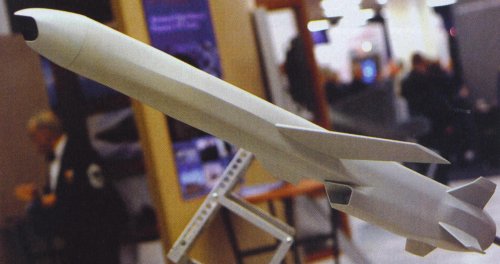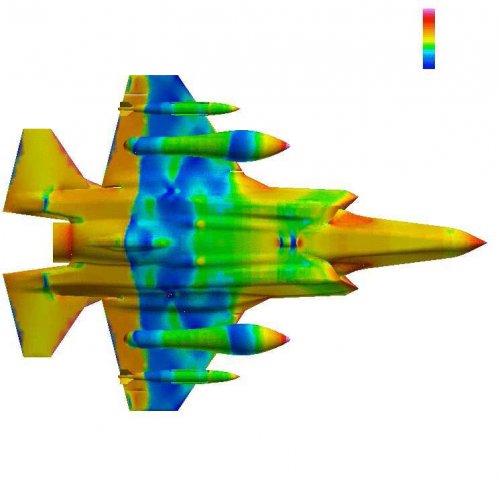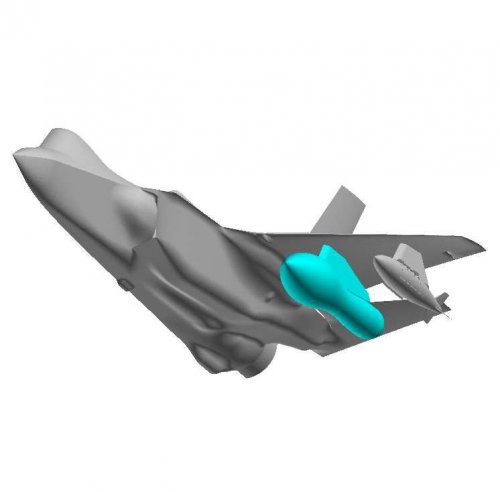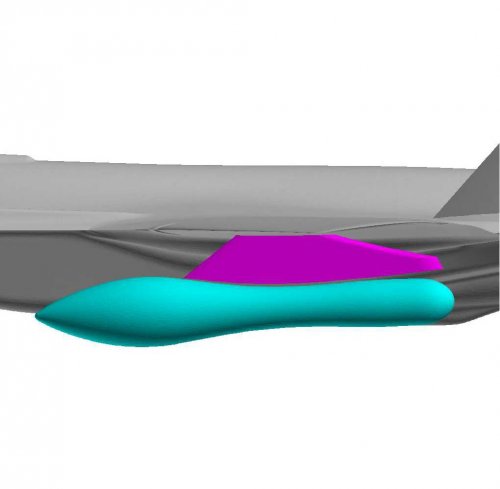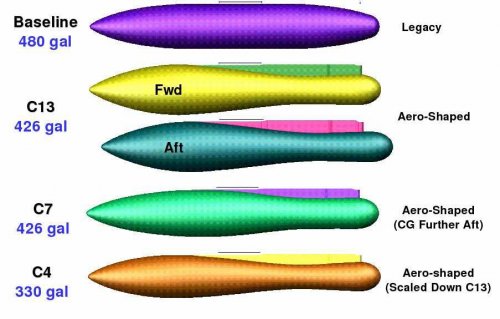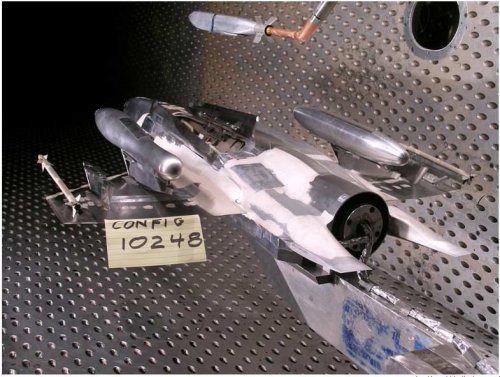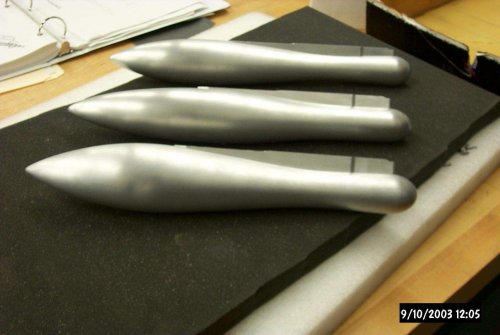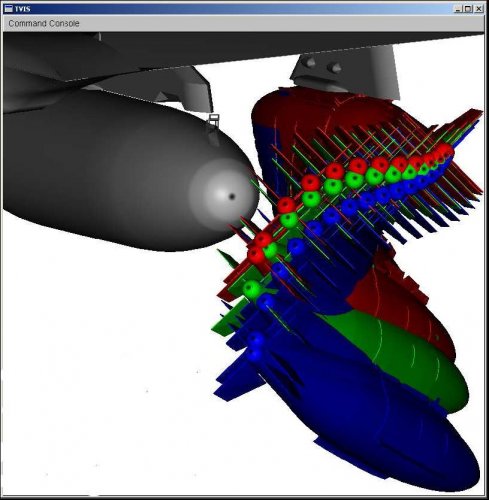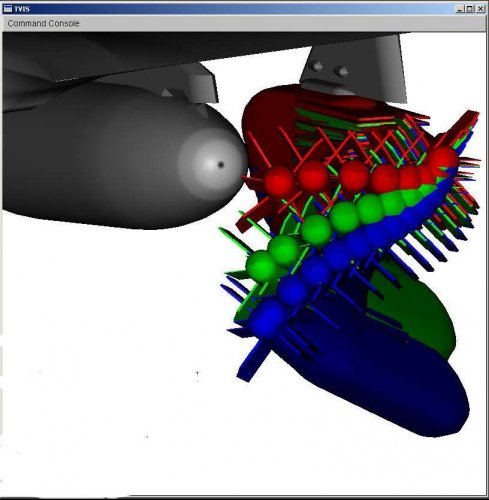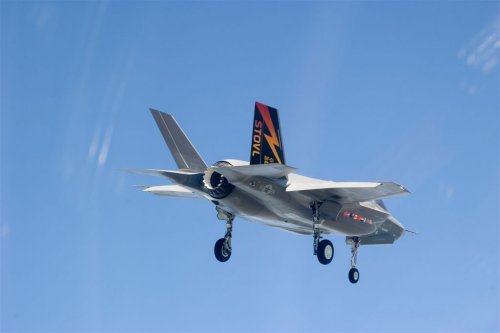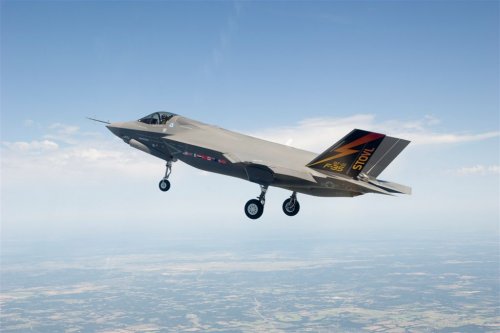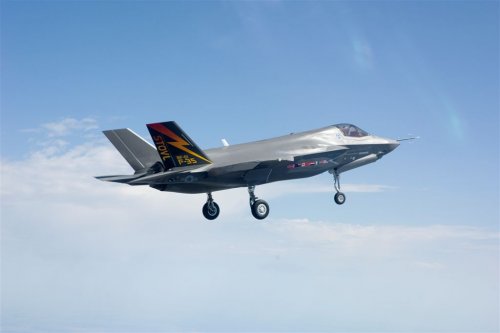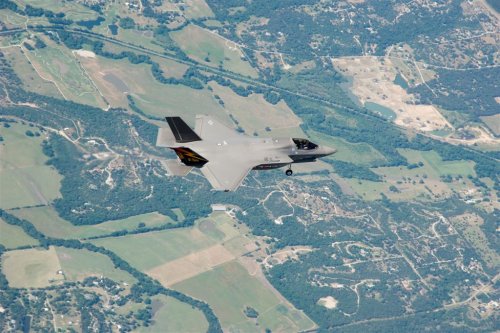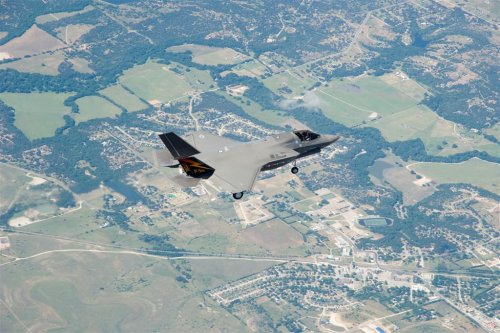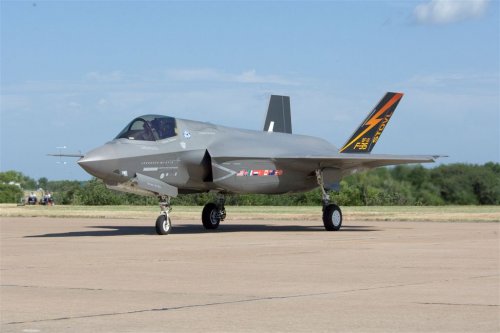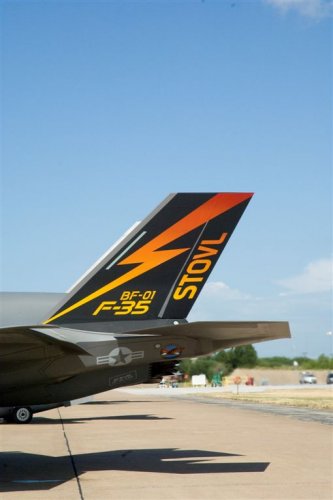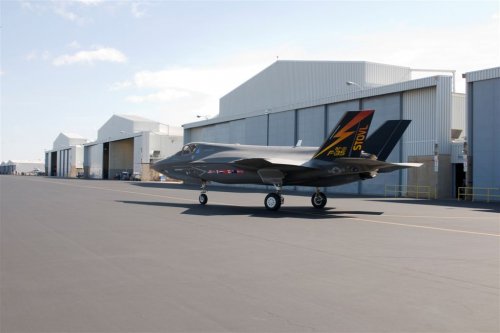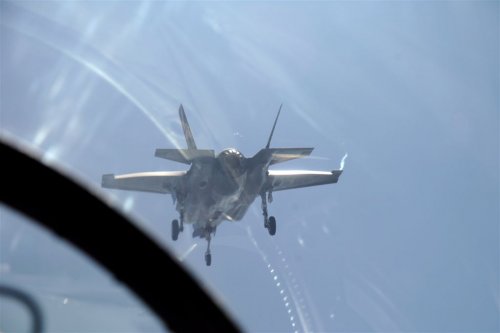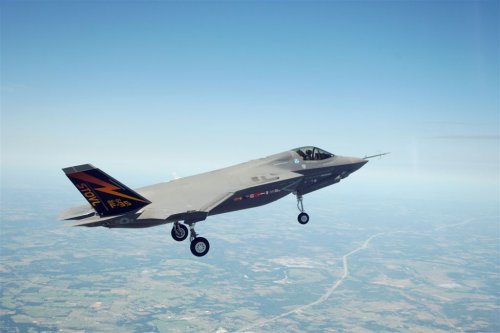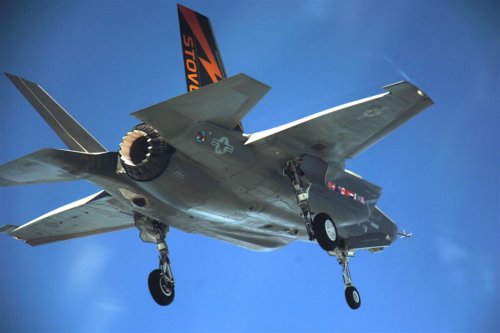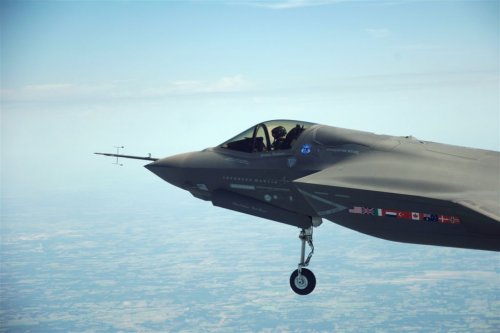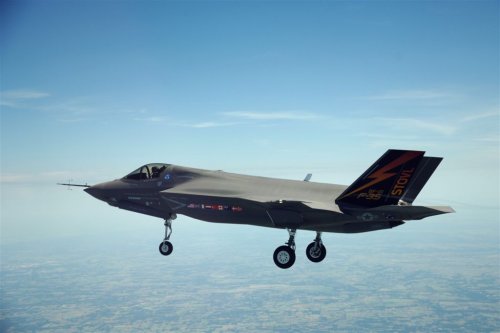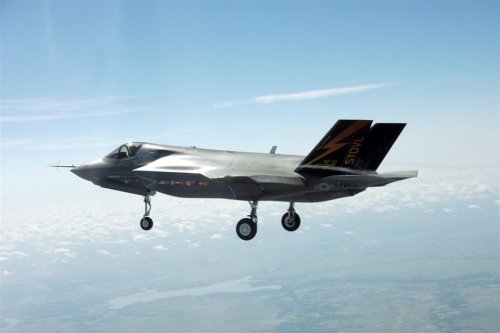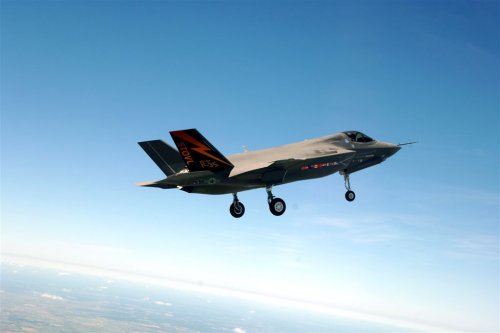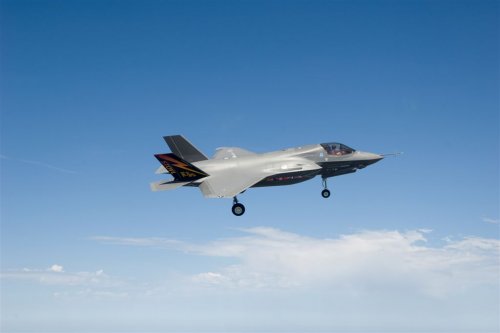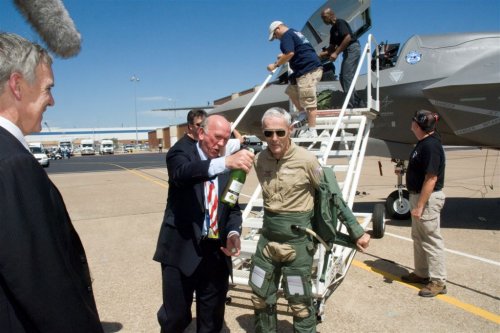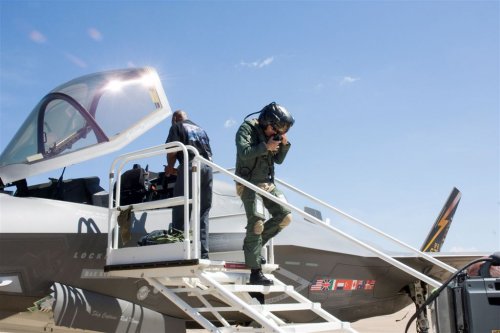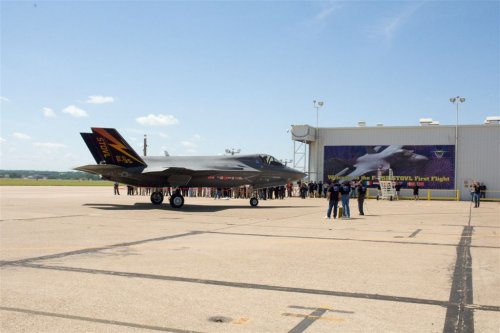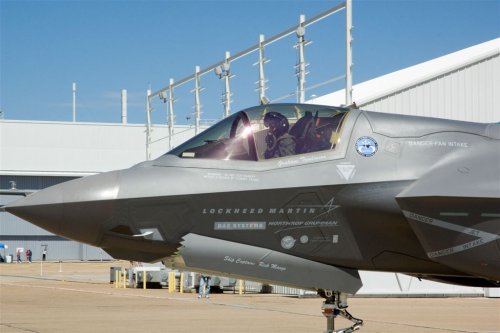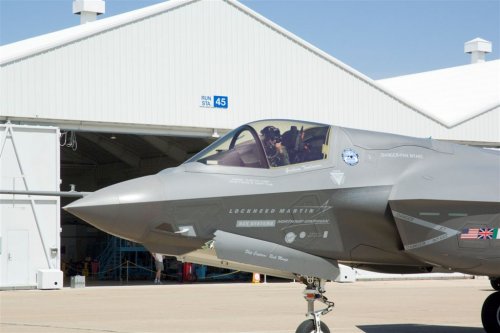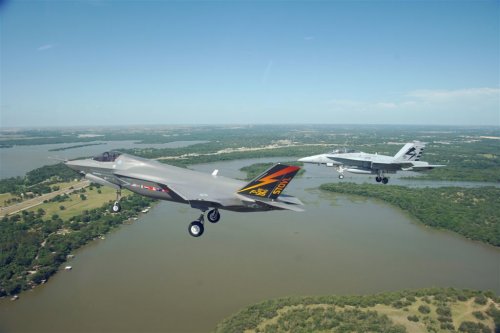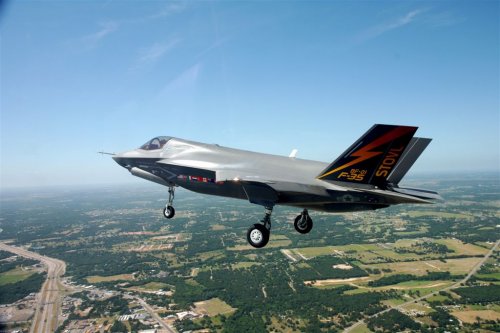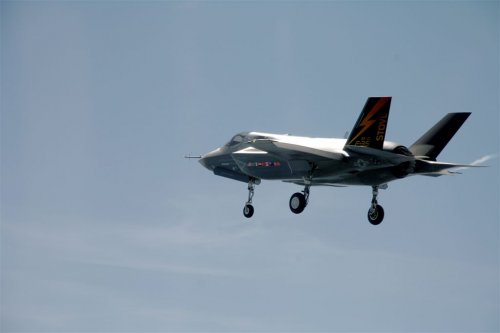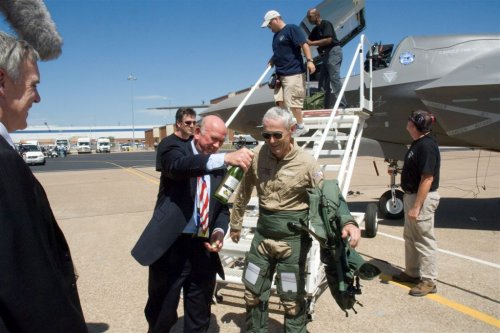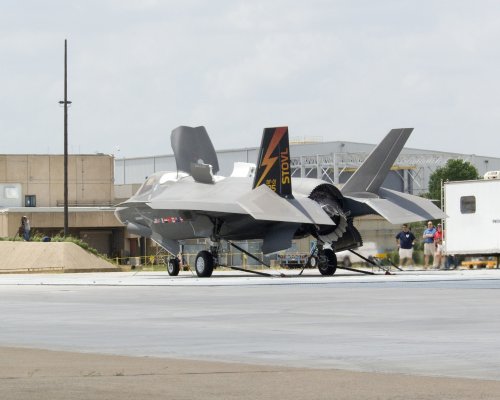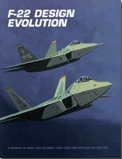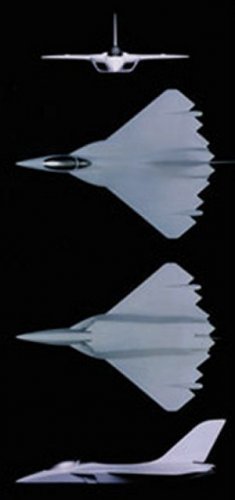Major General Charles Davis, USAF, the Program Executive Officer of the JSF program, explained that critics of the F-35 simply do not understand the fundamental requirements and technologies behind the aircraft, nor have these critics been briefed about the true capabilities of the new warplane. The F-35 is "not designed for an air-show in Paris," Davis said referring to the thrust vectoring Russian Su-35 aircraft which regularly performs spectacular routines at air-shows around the world. Davis said that while the F-35 was not designed as a pure air superiority machine, the program has a requirement to defeat any threat aircraft today- or any projected threat aircraft in the future.
The JSF accomplishes this feat by relying on its incredible suite of sensors, its stealthy airframe, and a surprising level of agility. The F-35 is not only equipped with the APG-81 active electronically scanned array radar (AESA), which according to Lockheed Martin F-35 Chief Test Pilot Jon Beesley, is the most advanced fighter radar system in the world, but also a host of other sensors. The radar can track an enormous numbers of targets in the air at phenomenal ranges while simultaneously operating air to ground modes, Beesley said.
Complementing the radar, the F-35's airframe is also lined with antennas that gather vast amounts of electronic information from the jets surroundings. The system allows the fighter to target and identify the electronic emissions of hostile radars in the air or on the ground with startling precision, Beesley said. The data gathered from these sensors allows the aircraft to track, identify and attack the sources of these signals without giving away the F-35s' position.
Furthermore, the F-35 has two separate types of infrared sensors that allow the jet to track targets passively. The Distributed Aperture System (DAS) is a system of cameras that feeds an infrared image of the planes' surrounding to the pilots' helmet, Beesley explained. The computer fuses the images from the six cameras and merges the images into a single seamless picture that allows the pilot to see 360 degrees around the aircraft, including through the cockpit floor and indeed the pilots' own body. The DAS also acts as a missile warning system (MWS) that alerts the pilot to incoming missiles. The second infrared sensor, called the electro-optical targeting system (EOTS), allows the aircraft to target, track, and identify object in the air or on the ground at long ranges and high resolutions, Beesley said.
The F-35 is able to transmit the wealth of data that the warplane gathers to other aircraft and to ground forces. Not only does the F-35 carry the standard Link-16 data-link to transmit information to over 100 other types of NATO platforms, the jet will carry data-links to communicate with ground forces and other stealth aircraft. A next-generation data-link called the Multifunction Advanced Data-Link (MADL) which will be carried by the F-35, will allow the plane to stealthily share data with the F-22 air dominance fighter and B-2 Spirit stealth bomber, enhancing the capabilities of all the aircraft involved. Additionally, the fighter's communication suite is based on an open source software programmable system. Thus as new technologies become available, new hardware and software can be added without the difficulties typically encountered with upgrading military systems, Davis said.
The F-35 is a stealthy airframe. Because the F-35 is designed to fly and fight in even the most heavily defended airspace, stealth is an essential component of the jets' design. The stealthy airframe is tailored for the mission of flying into the teeth of the most advanced air defences that the enemy can muster where conventional aircraft are vulnerable, Davis said. While the aircraft has a different radar cross section depending on which aspect angle is facing a threat radar, the plane meets the stringent requirements set forth by the U.S. military services based on more than 20 years of American experience with stealth aircraft design, Davis explained. Furthermore, stealth does not merely apply to an aircraft's radar cross section, an aircraft's infrared signature is similarly tailored to be less detectable by the enemy, Davis said. The sum total is an aircraft that is less vulnerable to the enemy from the air or ground.
The F-35 carries a diverse load of weaponry. Almost every air to ground weapon in the U.S. arsenal will eventually be integrated into the jet. These weapons include a host of laser guided weapons, satellite guided munitions, and air to ground missiles. While the perceived lack of weapons payload is the one of the main criticisms levelled at the JSF, Davis points out that the aircraft can carry a huge load of weapons externally once the enemy air defense systems have been destroyed. During the opening days of a war, Davis said weapons have to be carried internally in order to maintain the maximum level of stealth. In a full stealth configuration, the primary weapons load is limited to two 2000 lbs JDAM satellite guided munitions and two air to air AIM-120 AMRAAM missiles. In the future, however, the JDAM will be exchanged for as many as eight, possibly more, 250 lbs Small Diameter Bombs (SDB), allowing a single jet to strike as many as eight or more separate targets, Davis said.
In a pure stealth air to air configuration, the F-35 currently carries four AIM-120 AMRAAM missiles internally in its weapons bays, Davis said. While this configuration gives the jet a significant punch, Davis said studies have been undertaken that would increase the stealth air to air war load to six to possibly as many as eight air to air missiles which would be carried internally. The jet can also carry air to air missiles externally should the need arise and stealth is no longer a concern, Davis said.
In terms of aerodynamic performance, the F-35 is an excellent machine, Beesley said. Having previously been only the second man ever to have flown the F-22 Raptor, Beesley became the first pilot ever to fly the F-35 in late 2006. As such, Beesley is intimately familiar with both programs. According to Beesley, the four current test pilots for F-35 have been most impressed by the aircraft's thrust and acceleration. In the subsonic flight regime, the F-35 very nearly matches the performance of its' larger, more powerful cousin, the F-22 Raptor, Beesley explained. The "subsonic acceleration is about as good as a clean Block 50 F-16 or a Raptor- which is about as good as you can get." Beesley said.
The aircraft flies in "large measure like the F-22, but it's smaller, and stiffer" than the Raptor however, Beesley explained, adding that the aircraft handles superbly. The reason for the similar flight characteristics, explained the test pilot, is because the man who designed the flight control laws for the Raptor, is also the same man who is responsible for the flight control software for the F-35. As Beesley explains, the flight control laws of modern fighters determine to large extent the flight characteristics of a given aircraft. Beesley said that the aircraft is so stable and so comfortable that the test pilots find themselves inadvertently drifting too close to their wingmen in formation.
What Beesley expects will surprise future F-35 pilots is the jets' superb low speed handling characteristics and post-stall manoeuvrability. While the F-22 with its thrust vectored controls performs better at the slow speeds and high angle of attack (AOA) flight regime, the F-35 will be able match most of the same high AOA manoeuvres as the Raptor, although it will not be able to do so as quickly as the more powerful jet in some cases. Turning at the higher Gs and higher speed portions of the flight envelope, the F-35 will "almost exactly match a clean Block 50 F-16 and comes very close to the Raptor", Beesley said.
Ironically, the Navy version, which has larger wings but a lower G limit of 7.5G, has the best turning capability of the three F-35 versions Beesley explained. The Air Force version, meanwhile, has the best acceleration and is rated for 9Gs, Beesley said. Davis, explaining that the Marine Corps deemphasizes manoeuvrability in its air combat doctrine, said that the short take off, vertical landing (STOVL) USMC plane has a 7G limit. Beesley said that the aircraft makes up for the lower G limit by offering the flexibility in basing required by the Marines. Nor does the STOVL give up too much in range because of the engine driven lift fan installed behind the cockpit, Beesley said. The jet has "a range of more than 500 miles", while the Air Force and Navy planes both have ranges greater than 600 miles, Beesley explained, adding that the USAF version has as much internal fuel capacity as the larger twin engined F-22 Raptor.
While supersonically the F-35 is limited to a seemingly unimpressive Mach 1.6 in level flight, Davis explains that the JSF is optimized for exceptional subsonic to supersonic acceleration. Transonic acceleration is much more relevant to a fighter pilot than the absolute max speed of the jet, Davis said. Davis, who was previously the program manager for the F-15 Eagle, explains that while the Eagle is a Mach 2 class fighter, it has rarely exceed the threshold of Mach 1.2 to Mach 1.3 during it's entire 30 year life span. Additionally, the time the aircraft has spent in the supersonic flight regime can be measured in minutes rather than hours- most of the supersonic flights were in fact during specialized flights such as Functional Check Flights (FCF). "I don't see how that gets you an advantage" Davis said, referring to the Mach 2+ capability. Beesley said that in terms of supersonic flight that the F-35 is still more than competitive with existing designs.
Comparisons to the F-22 Raptor are unfair as "supersonically, the Raptor is in a class by itself. It lives there," Beesley explained. "In many ways the Raptor is the first true supersonic fighter," Beesley added, referring to that aircrafts' much publicized and unique supersonic cruise capability.
Beesley explained that the F-35 is different from legacy fourth generation fighters such as the F-15, F-16, F/A-18, or even more modern aircraft such as the Eurofighter, in that the primary weapons load is stored internally. This arrangement means that there is no added drag to the airframe from externally carried weapons, fuel tanks, or sensor pods as in older aircraft types. The outstanding handling, acceleration, and the maximum speed of the aircraft is useable in a combat configuration unlike in legacy fighters. Beesley said that recently he flew an F-35 test flight with a full internal load of two 2000 lbs JDAMs, and two AIM-120 missiles. The aircraft "felt like it had a few thousand pounds of extra fuel" but otherwise Beesley said there was practically no degradation in the aircrafts' performance.
What this means for the pilots who will fly the F-35 over future battlefields is that the Lightning II will be an aircraft that will excel in a multitude of roles. The JSF will provide the troops on the ground with close air support (CAS). However, the way the F-35 will carry out the CAS mission will be significantly different from the way the current A-10 Warthog performs the mission. There will be less emphasis on flying at low altitudes and absorbing ground fire and more emphasis on intelligence gathering and precision guided strikes, Davis explains. The F-35 will use its superb sensor capabilities and data-links to transmit real time imagery and sensor data to the troops on the ground in addition to using its 25 millimetre cannon and SDBs to provide fire support, Davis said. The jets' stealth capabilities will allow the jet to do so even in a high threat environment.
The most challenging mission for the JSF is where the F-35s will have to penetrate deep into a dense integrated air defense system reinforced by enemy fighters and strike a target with no support, Davis said. This is the most difficult mission for the F-35, but it is also one that is near suicidal for current aircraft such as the F-16. Modern Russian built surface to air missile systems such as the SA-20 are deadly to conventional aircraft, Davis explained. A package of four, six, or even eight F-35s would have to divide up the responsibilities for the suppression of enemy air defenses, mapping out the target, clearing the skies, and striking the target, Davis said. The larger number of aircraft is necessary since the F-35 "doesn't have the kinematics of the F-22", Davis explained, "we're a slightly fatter, slower aircraft, so it takes a few more planes to get the job done."
Beesley for his part, when asked which aircraft he preferred, said that "for clearing the skies" he'd have to pick the Raptor, but for everything else the F-35 would be his pick he said, adding,
"The F-35 offers a greater depth and breadth of missions." Beesley said, given the F-35s' awesome capabilities, "The only airplane that can complete with it is the Raptor. Everything else is playing in a different league."

